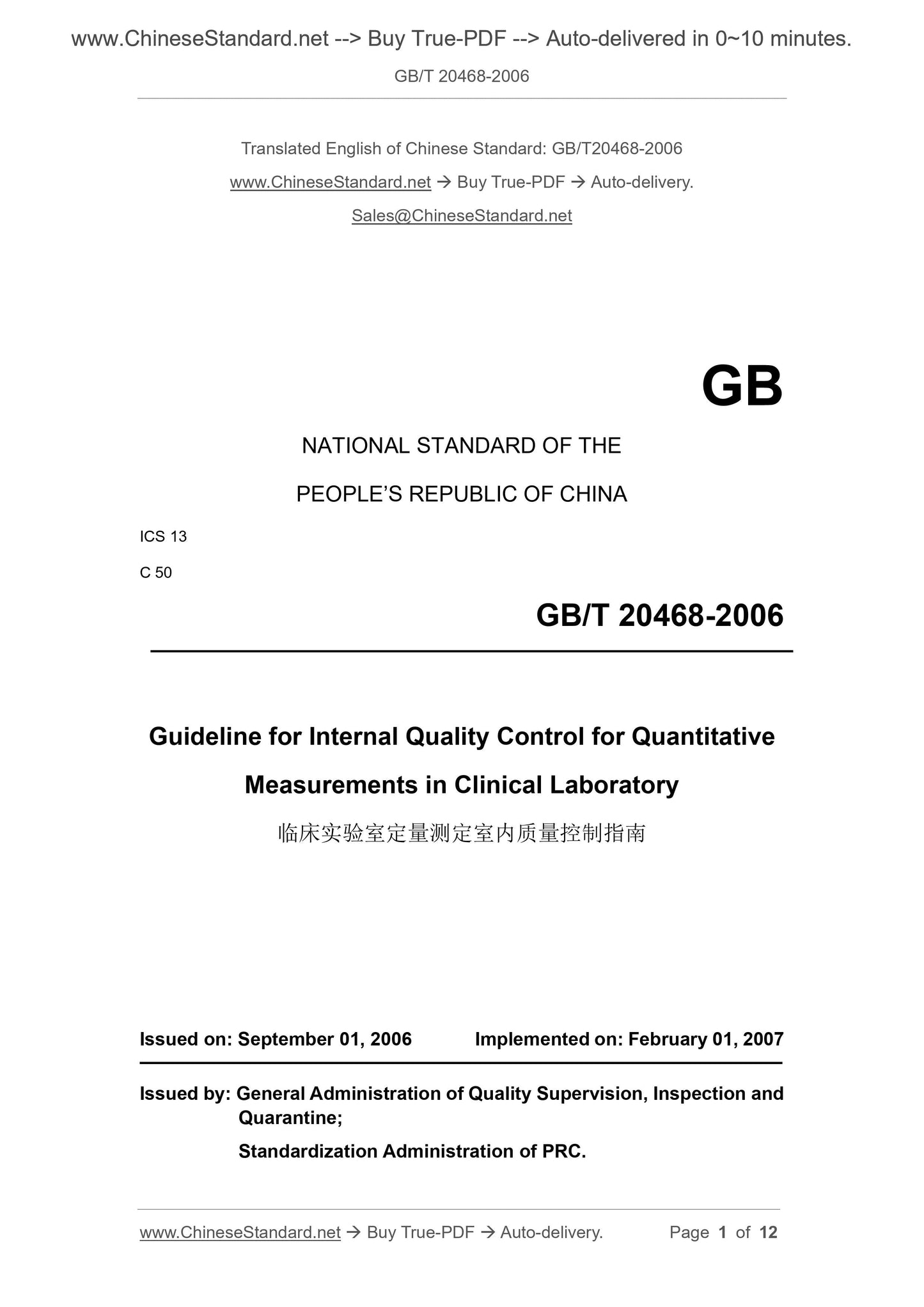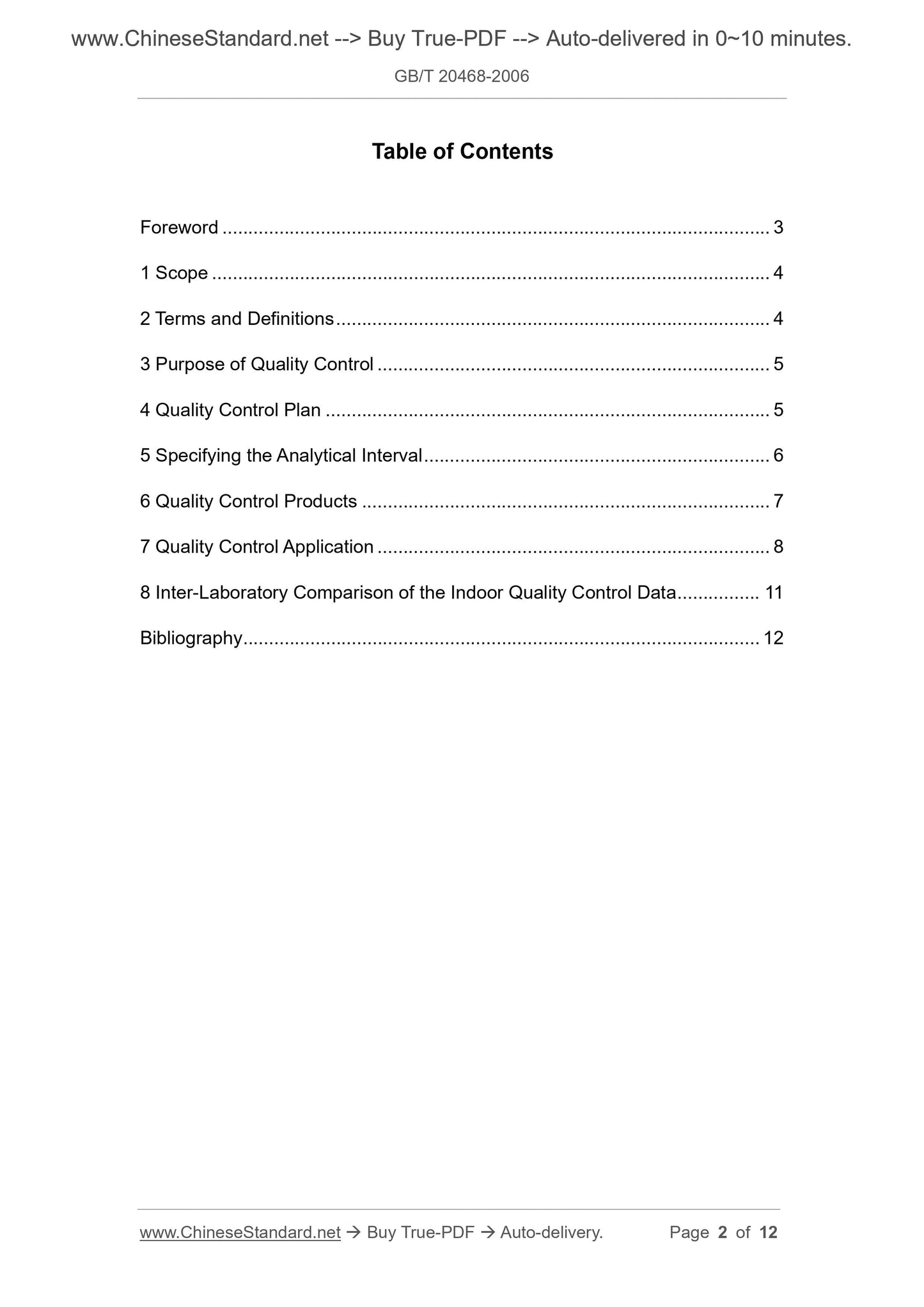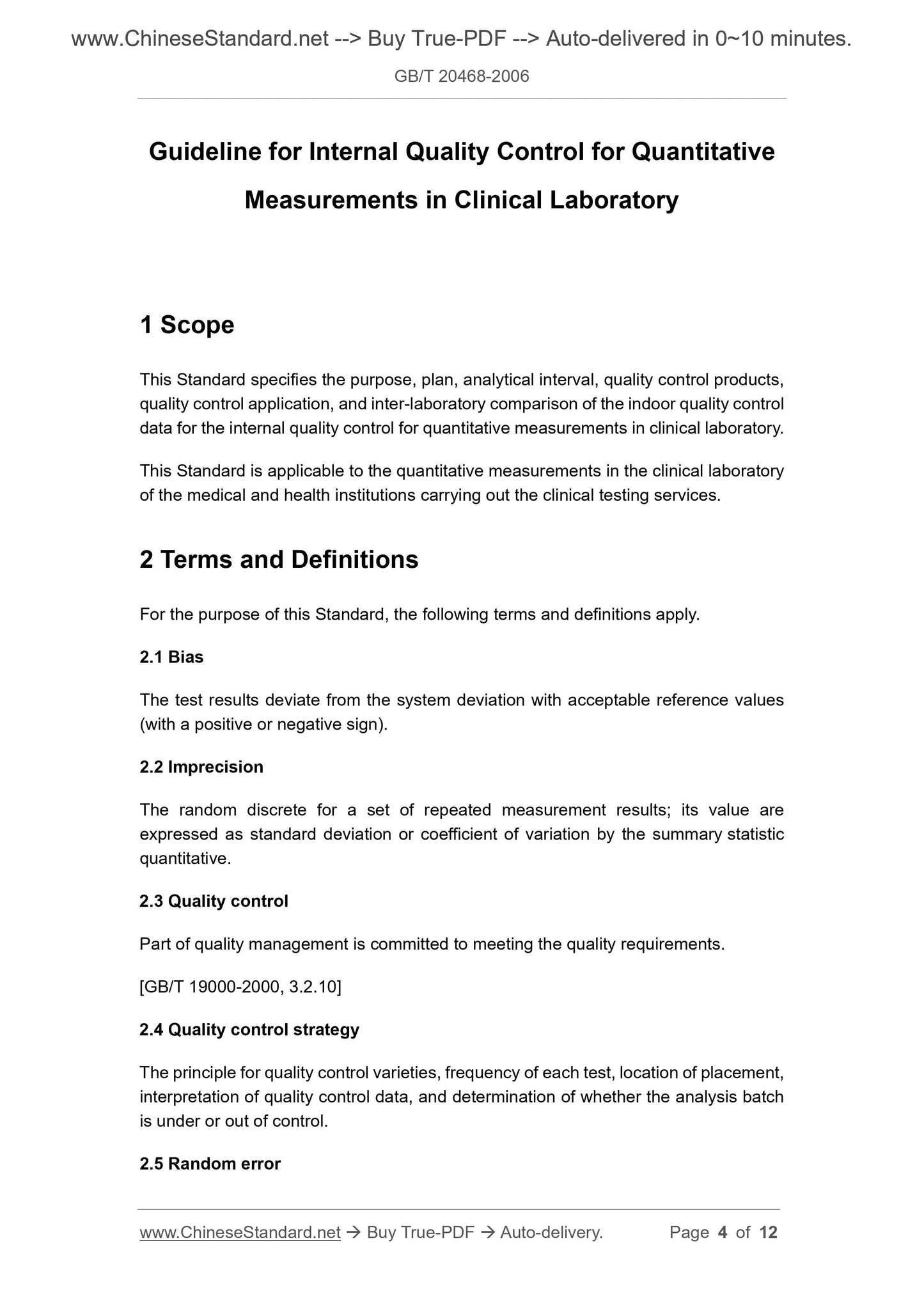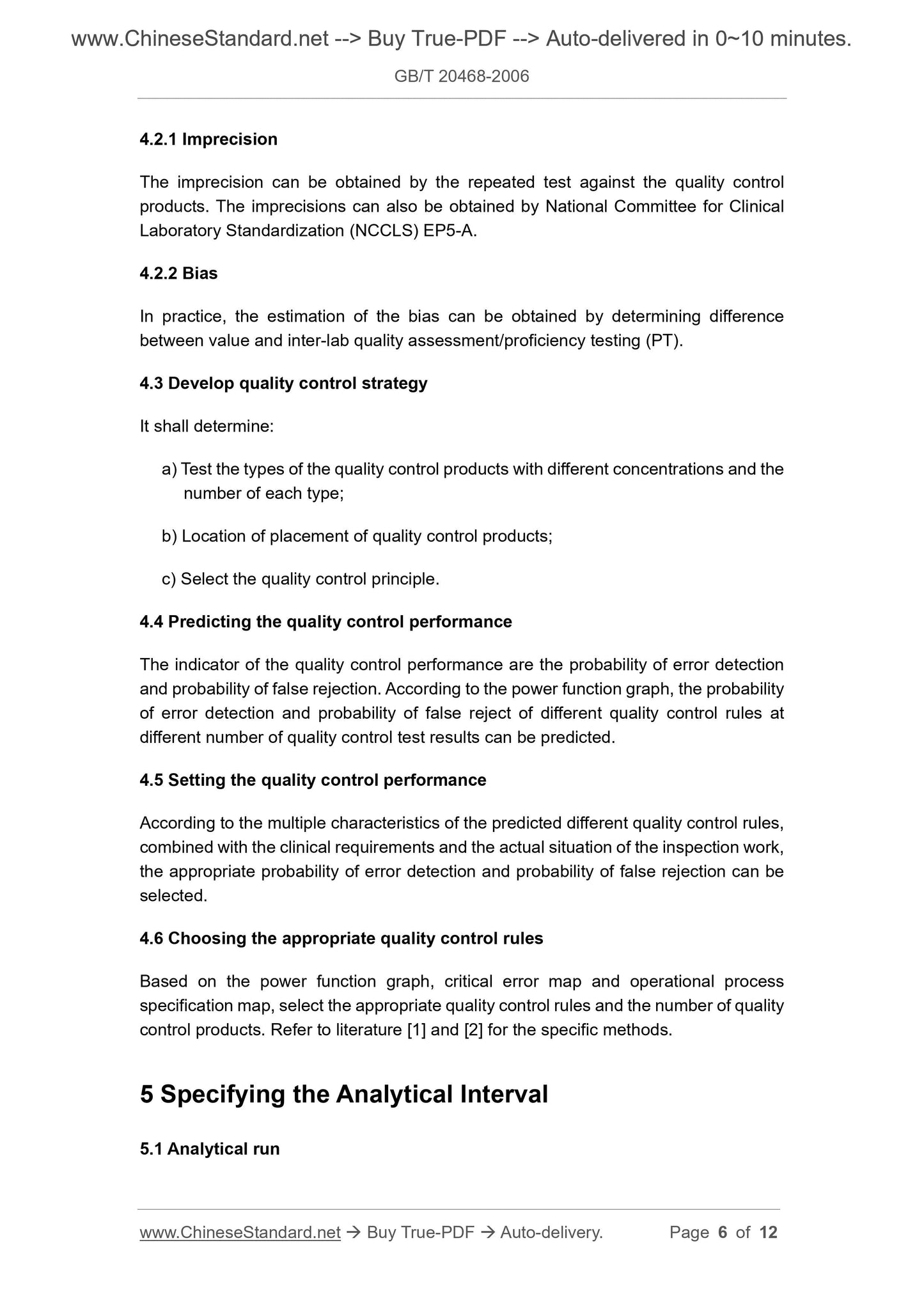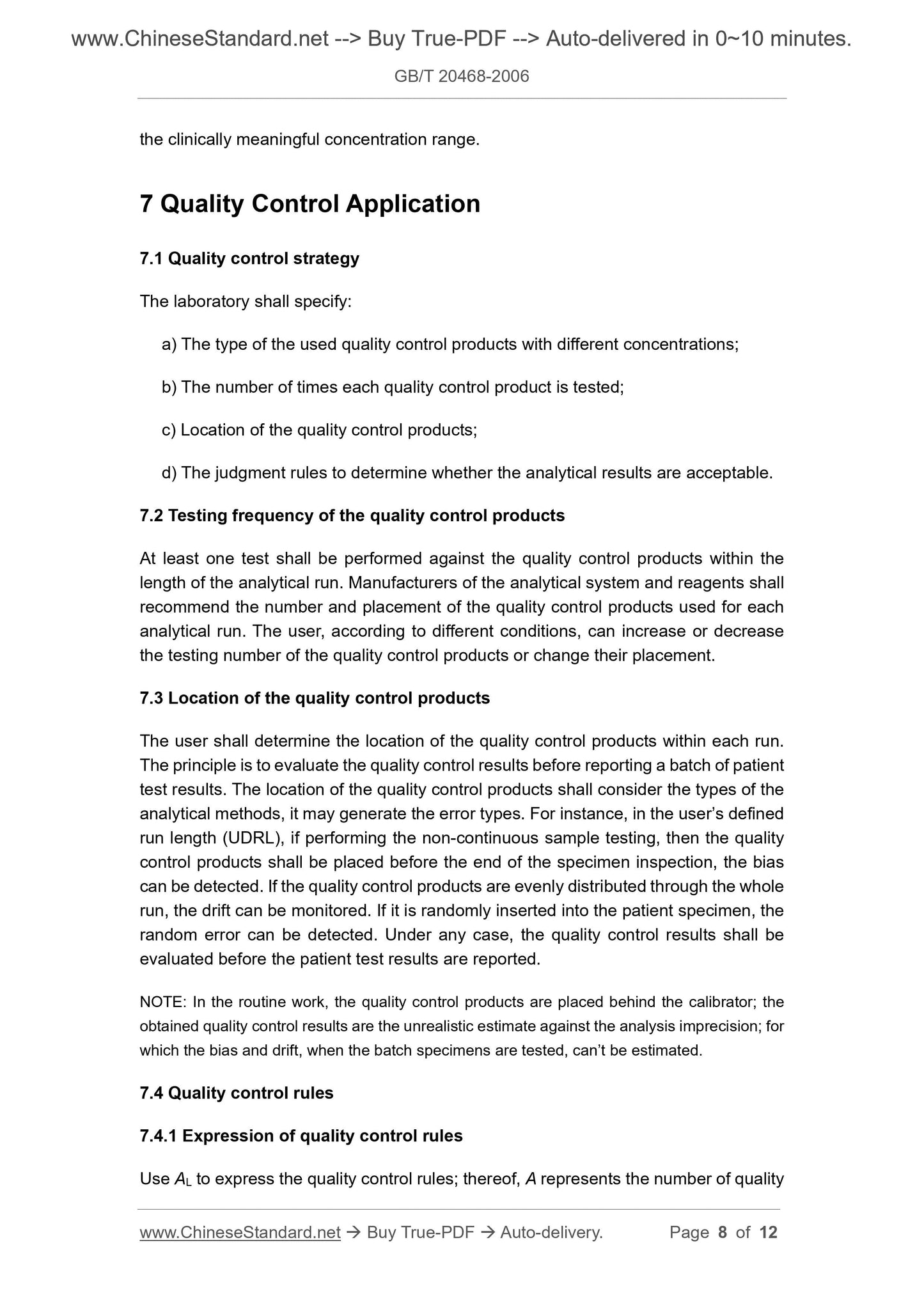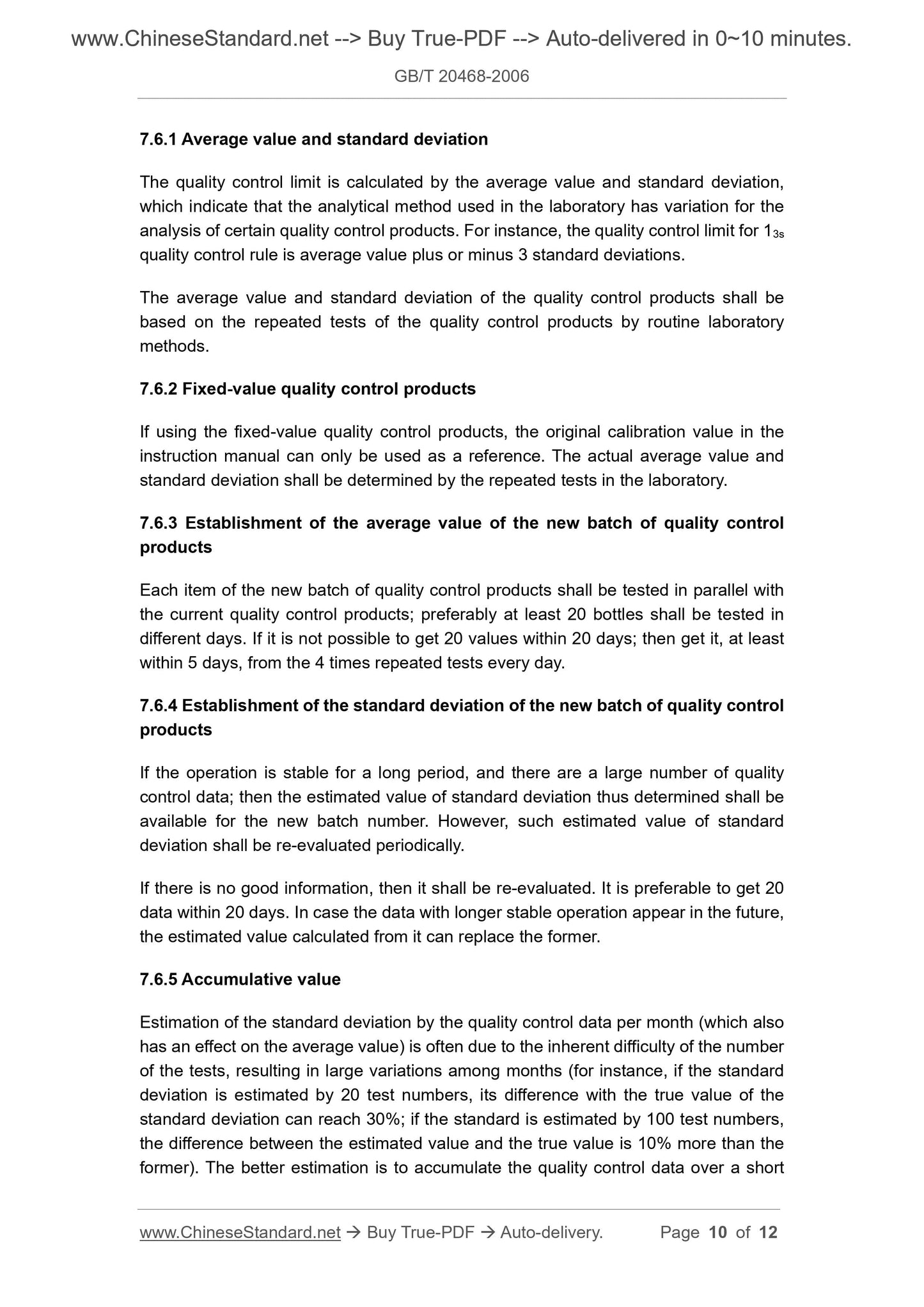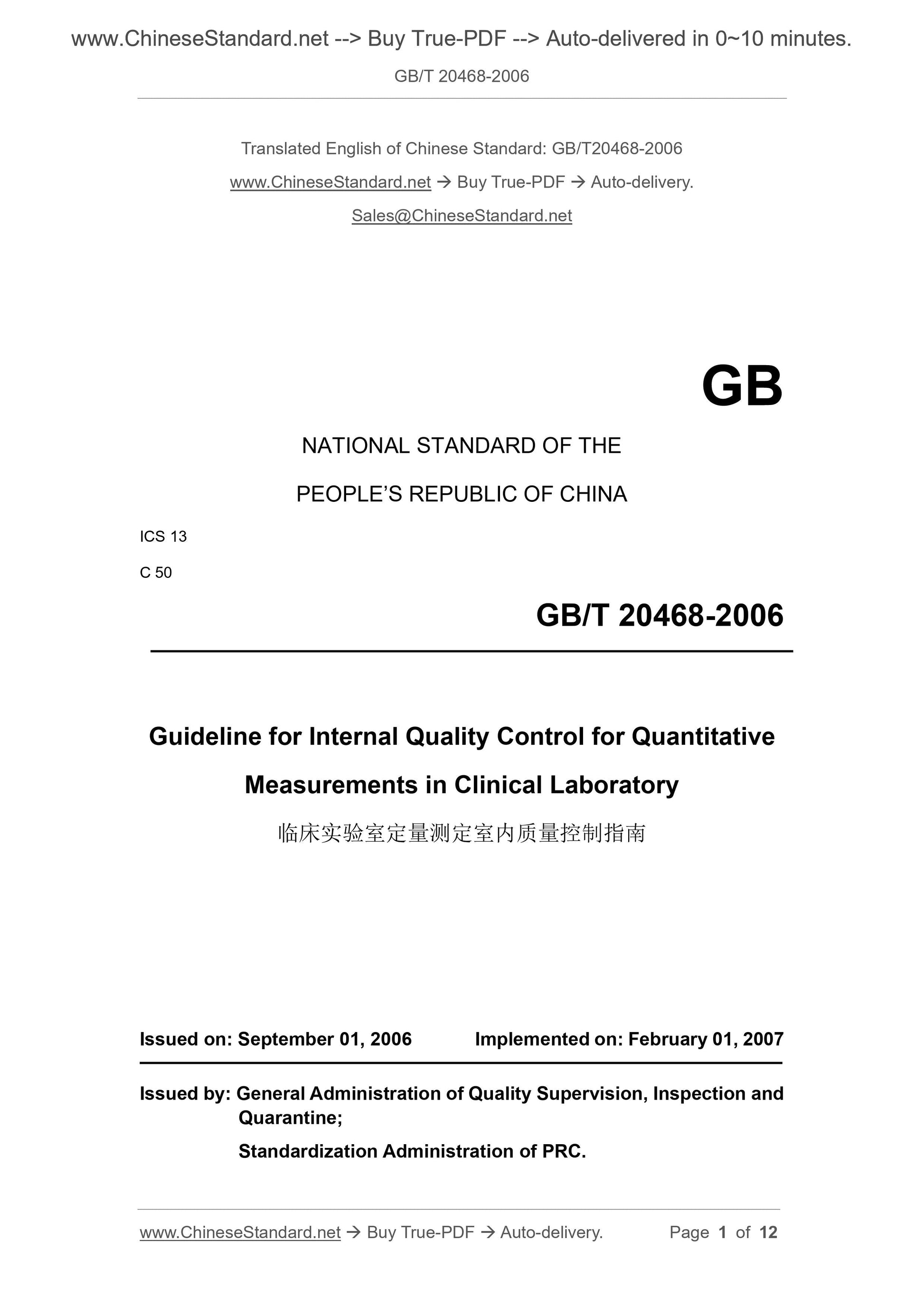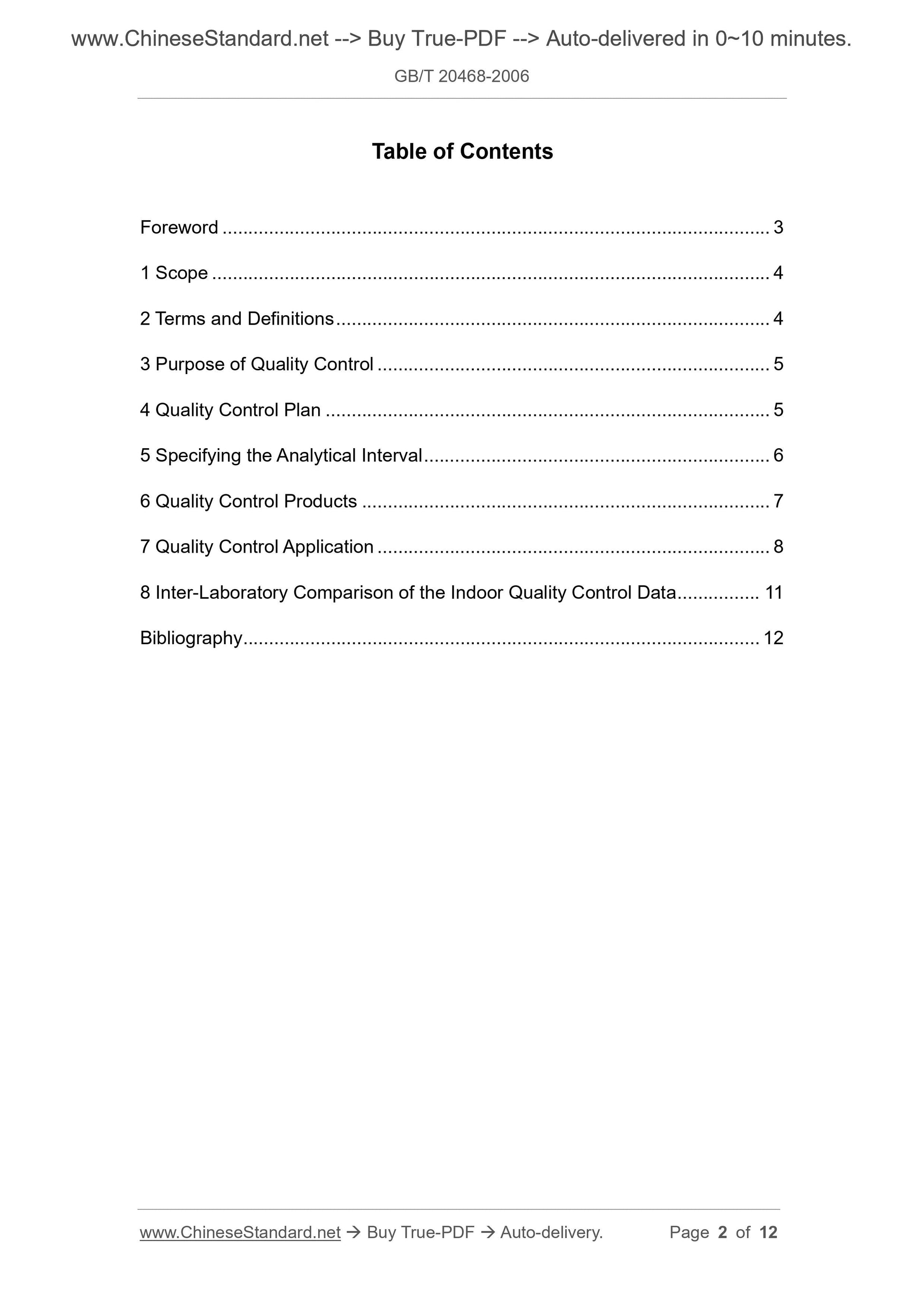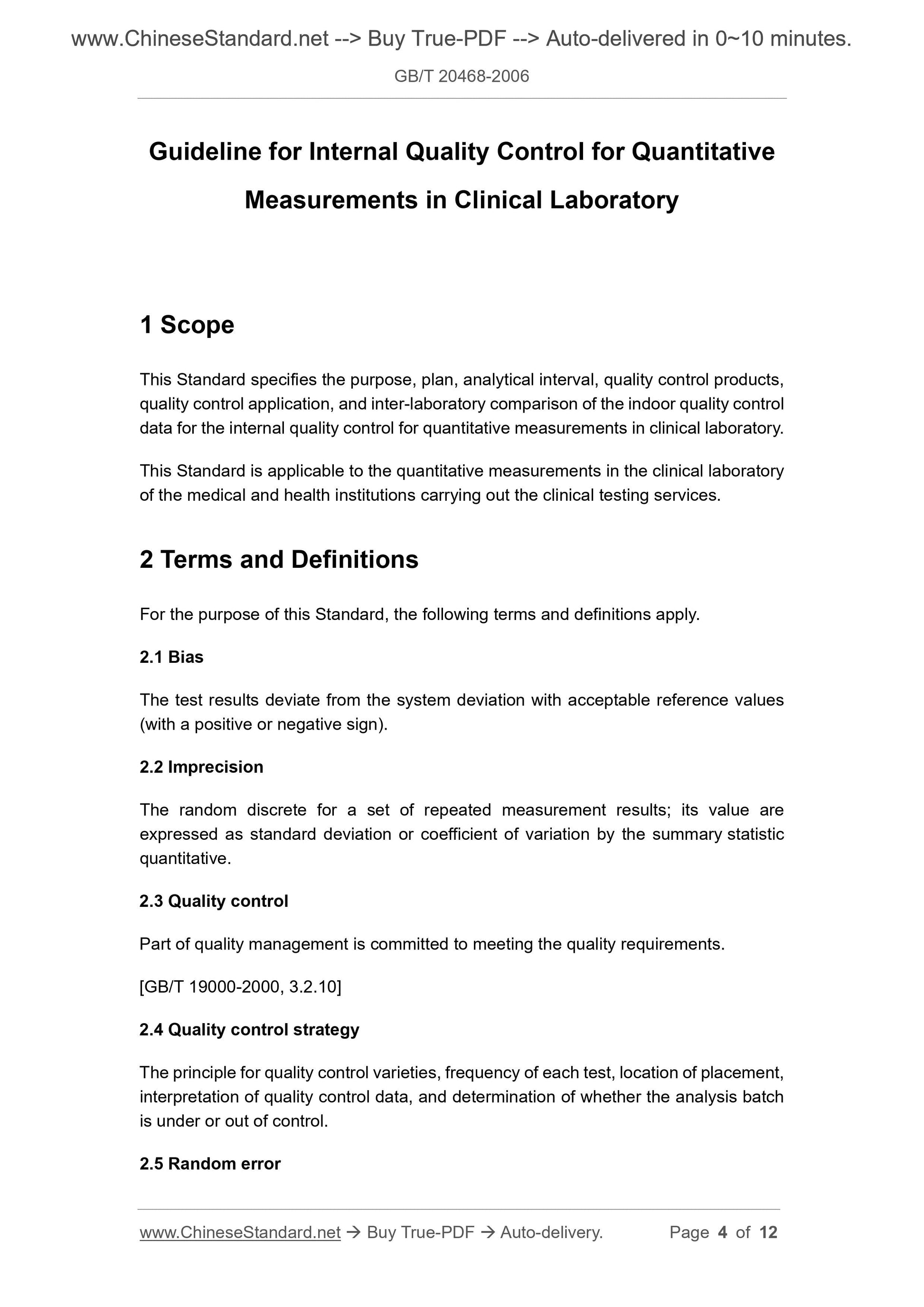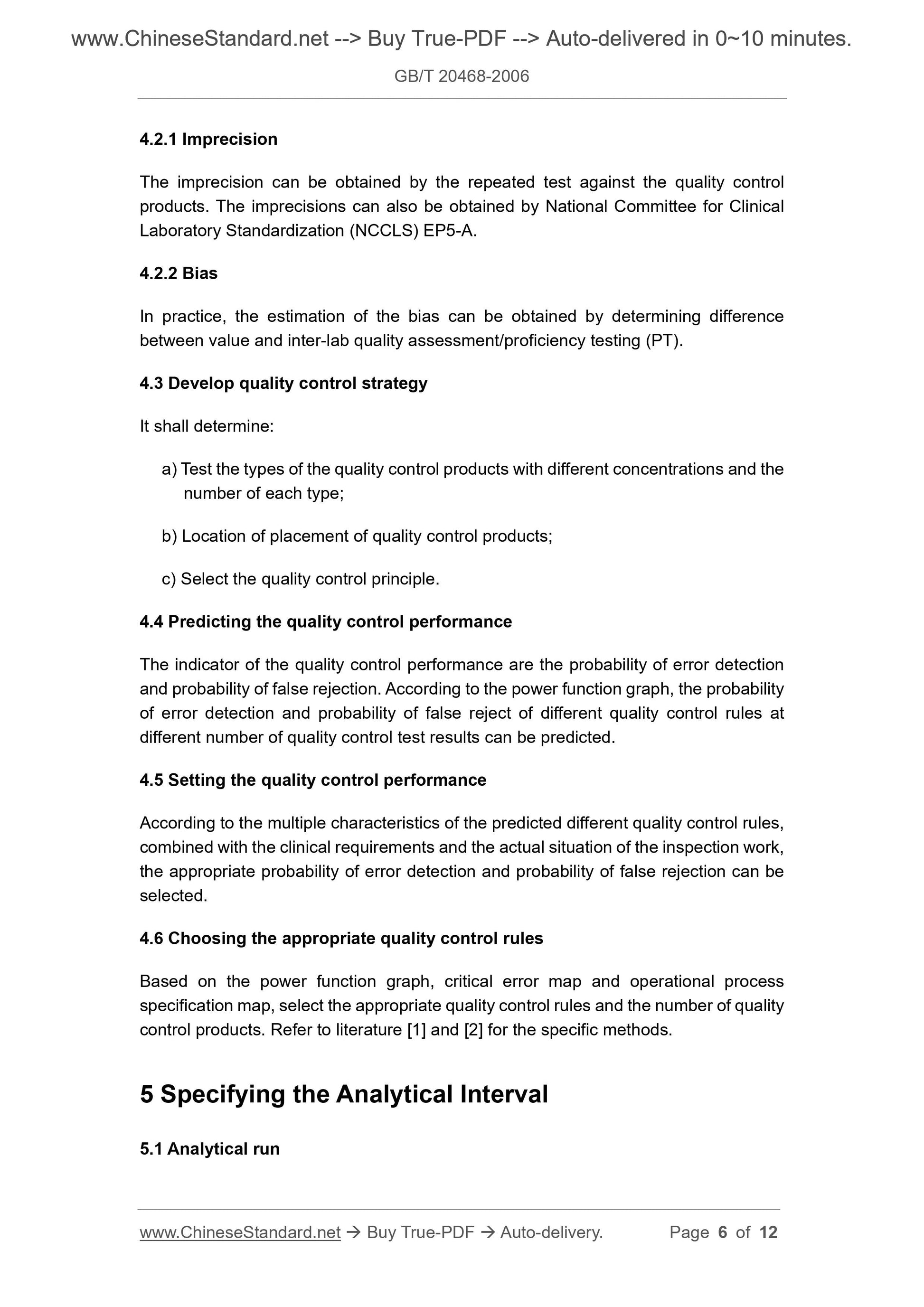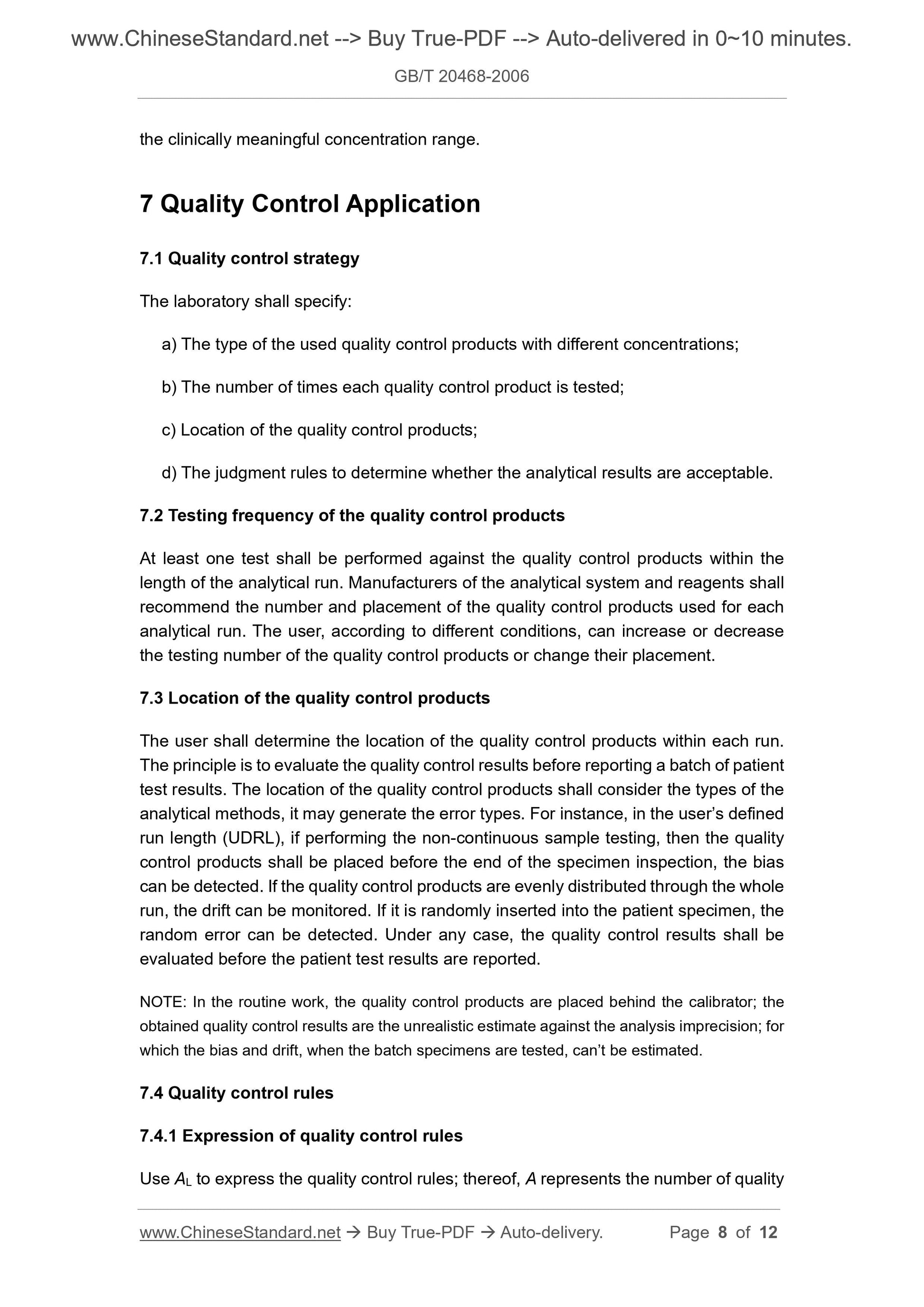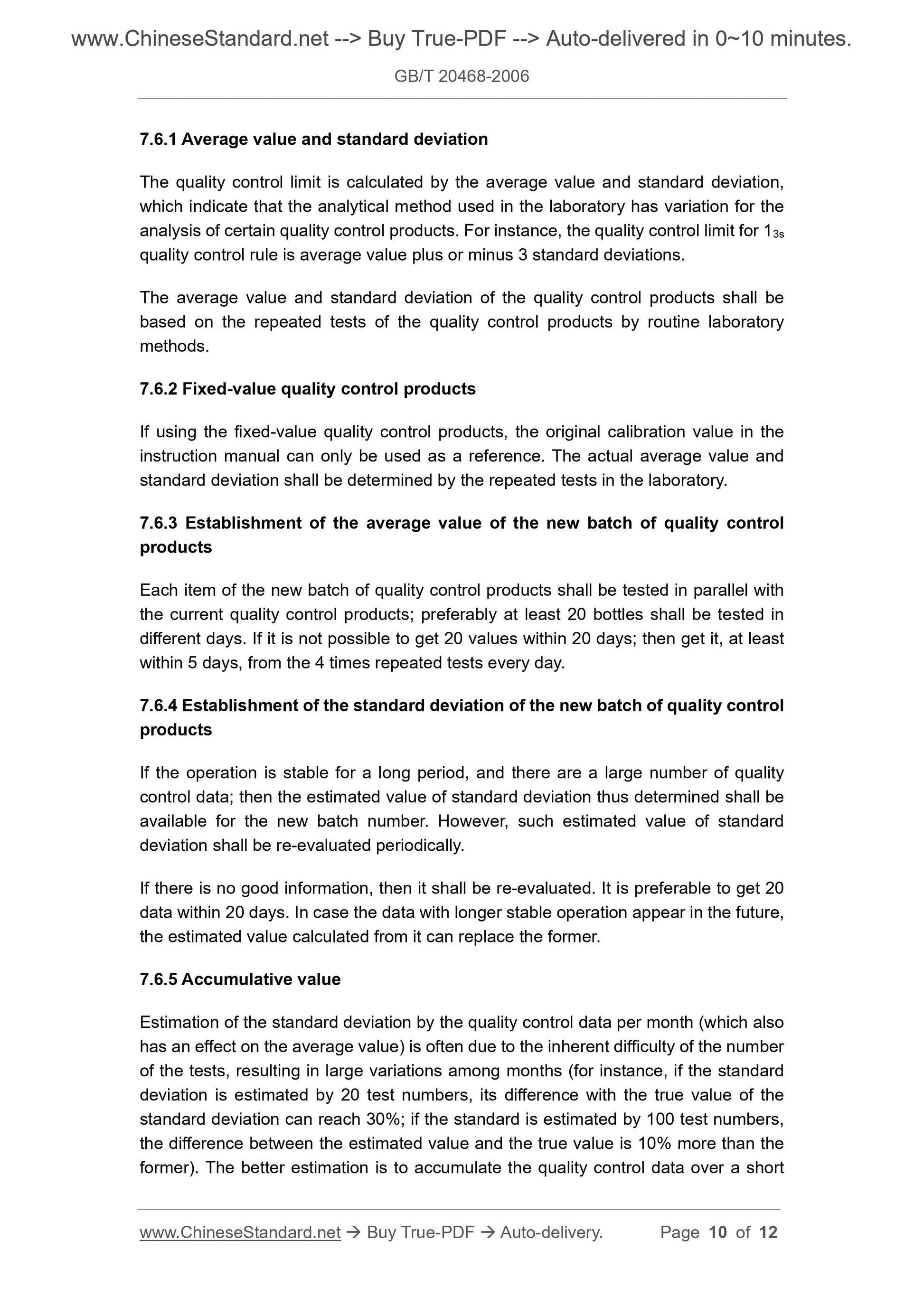1
/
of
6
www.ChineseStandard.us -- Field Test Asia Pte. Ltd.
GB/T 20468-2006 English PDF (GB/T20468-2006)
GB/T 20468-2006 English PDF (GB/T20468-2006)
Regular price
$90.00
Regular price
Sale price
$90.00
Unit price
/
per
Shipping calculated at checkout.
Couldn't load pickup availability
GB/T 20468-2006: General for internal quality control for quantitative measurements in clinical laboratory
Delivery: 9 seconds. Download (and Email) true-PDF + Invoice.Get Quotation: Click GB/T 20468-2006 (Self-service in 1-minute)
Newer / historical versions: GB/T 20468-2006
Preview True-PDF
Scope
This Standard specifies the purpose, plan, analytical interval, quality control products,quality control application, and inter-laboratory comparison of the indoor quality control
data for the internal quality control for quantitative measurements in clinical laboratory.
This Standard is applicable to the quantitative measurements in the clinical laboratory
of the medical and health institutions carrying out the clinical testing services.
Basic Data
| Standard ID | GB/T 20468-2006 (GB/T20468-2006) |
| Description (Translated English) | General for internal quality control for quantitative measurements in clinical laboratory |
| Sector / Industry | National Standard (Recommended) |
| Classification of Chinese Standard | C50 |
| Classification of International Standard | 13 |
| Word Count Estimation | 8,894 |
| Date of Issue | 2006-09-01 |
| Date of Implementation | 2007-02-01 |
| Adopted Standard | NCCLS C24-A2, MOD |
| Regulation (derived from) | China National Standard Approval Announcement 2006 No.10 (Total No.97) |
| Issuing agency(ies) | General Administration of Quality Supervision, Inspection and Quarantine of the People's Republic of China, Standardization Administration of the People's Republic of China |
| Summary | This standard specifies the purpose of the clinical laboratory quantitative determination of internal quality control, plan, analysis interval, quality control materials, quality control applications, internal quality control data between laboratory comparison. Quantitative Clinical Laboratory Standards applicable to the conduct of clinical testing services to healthcare organizations determined. |
Share
